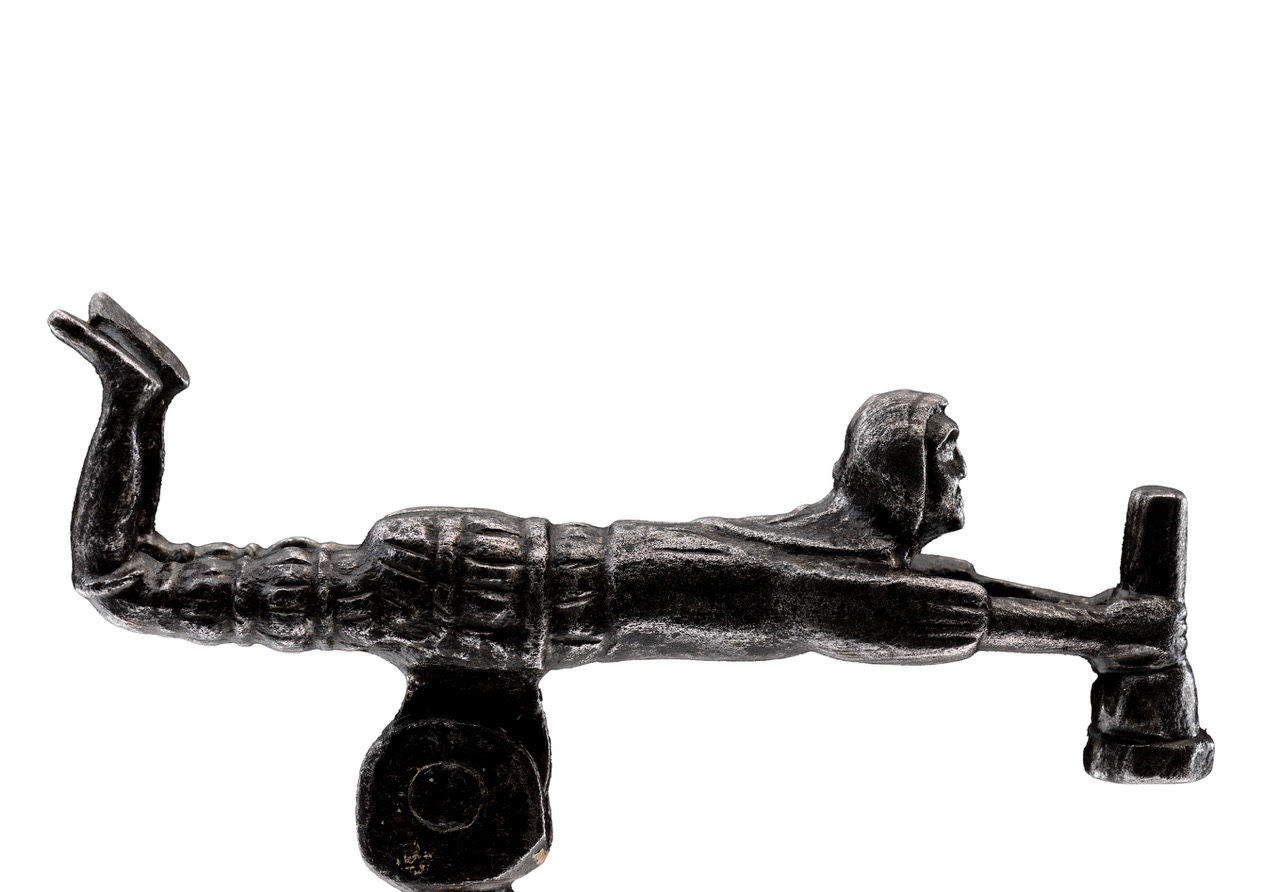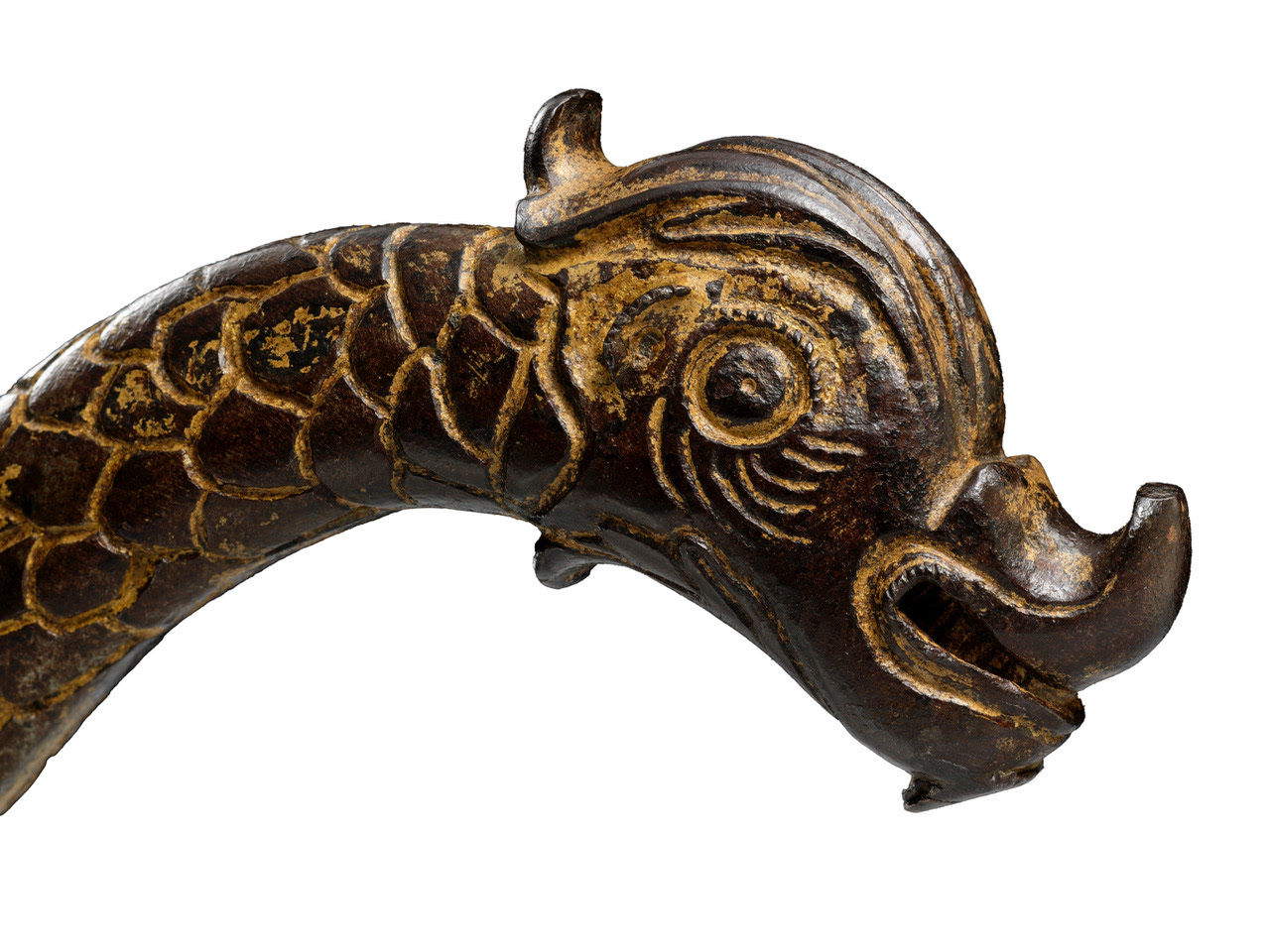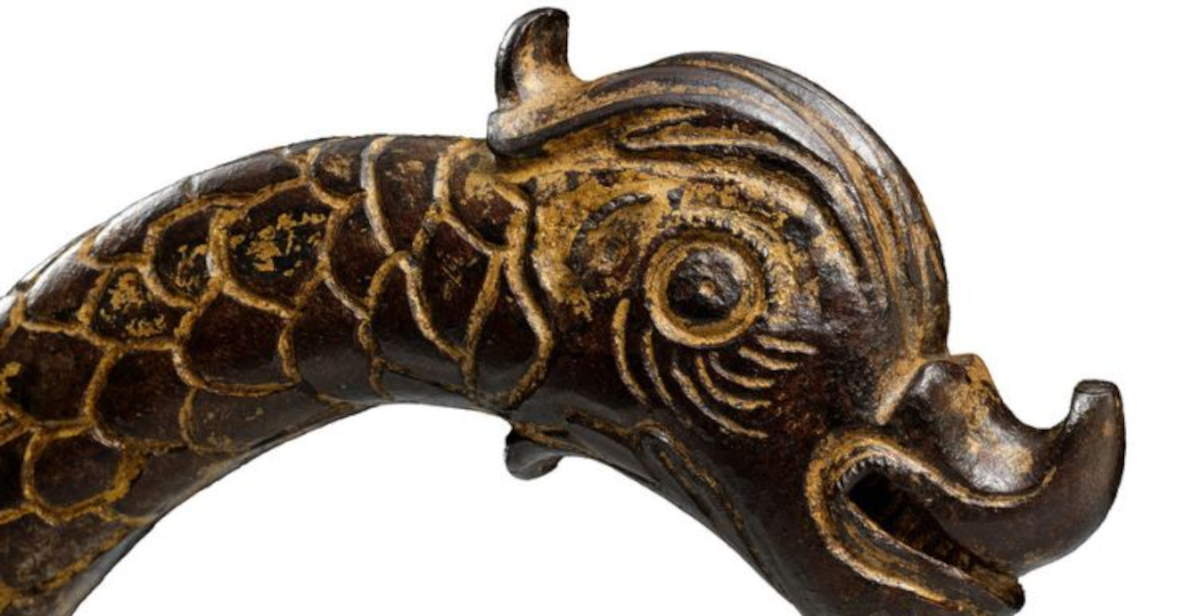From September 14, 2025 to January 6, 2026, Franco Maria Ricci ’s Labirinto della Masone in Fontanellato (Parma) will host the exhibition Knock Knock Knock. Iron Guardians from the Cesati Collection, curated by Alessandro Cesati and the Franco Maria Ricci Foundation. The exhibition offers a unique journey among 65 door knockers, also called picchiotti or batacchi, chosen from a collection of collectibles that has matured over more than 50 years. The exhibition project also aims to enhance their symbolic and cultural role. The clappers on display, produced between the 14th and 18th centuries in Italy, Spain, France, Austria and Germany, represent an example of applied art in which functionality, aesthetics and symbolic values are combined. Made by often anonymous craftsmen, these objects testify to the ability to forge unique pieces endowed with value and complex meanings.
“Compared to the classic and repeated bronze versions,” explain collectors Fiorenzo and Alessandro Cesati, “from the leonine protomes with the ring in their mouths that appeared in the ancient world to the spectacular specimens designed and made by Venetian artists of the 16th century-the iron picchiotti are certainly less well known-but perhaps even more interesting and rare precisely because of their absolute uniqueness.”
“The idea that the spirit of the house is embodied in a serpent is not only Latin,” explains Carlo Donà, Full Professor of Romance Philology at the University of Messina and author of an essay in the catalog. “The serpentine beings actually effigyed in the woodpeckers do not represent the demonic serpent of Christianity, but the good and providential genius of a much older tradition, a tradition that Christianity covered up and partly obliterated, but failed to eradicate: the woodpecker expresses, so to speak, the very soul of the House.”

Dialoguing with the material and history of the door-knockers will be the photographs of doors and gates made by Massimo Listri, which reinforce the theme of the exhibition, focused on the concept of threshold as limit and passage, both physical and metaphorical. This reflection is particularly topical, especially on the occasion of the 10th anniversary of the opening of the Labirinto della Masone, a structure that itself represents a metaphor of crossing between inside and outside.
“Photography for me is a tool for exploration,” the photographer says. “I happened to photograph doors and doorways because they are revealing elements of the concepts - fundamental to me - of space and perspective. The threshold also represents the boundary between what is visible and what is hidden, such as time flowing in places. Doors suggest an elsewhere, a transition, an invitation to silence and contemplation. Through these elements I narrate architecture as a mental and emotional experience.”

The woodpeckers, displayed in the rooms of the museum that houses Franco Maria Ricci’s art collection, take on a dual nature. On the one hand, they are objects of a high level of craftsmanship and decoration; on the other, they are functional elements with a dynamic component, linked to their use. In fact, the installation, curated by Maddalena Casalis and Elisa Rizzardi, pays attention not only to the plastic and figurative forms of the doors, but also to their “moving” aspect, evoked in the very gesture of knocking on the door, a gesture that reveals often unexpected details and details.
The careful selection of the specimens is based on qualitative criteria: all the door-knockers display figurative decorations, ranging from animal and human depictions to plant motifs. Some pieces show figures modeled in the round, such as animals or protomes; others are characterized by ring, lyre, or hammer forms embellished with symbolic details. The subjects also had a protective or propitiatory function, as in the case of dragons and snakes, recurring in the representations, animals associated with pagan cults and ancient beliefs.

Door knockers were part of the furnishings of the doors of homes and were considered luxury goods capable of positively influencing the domestic environment. Attention to the decorative aspect is thus accompanied by a symbolic and functional value, testifying to the use of iron as a durable material and as a means of artistic and cultural expression. The exhibition takes the form of a “chamber of wonders” that offers visitors an experience that goes beyond the mere display of art objects. Indeed, through the texts by Stefano Salis, which accompany the exhibition, the theme of the “gateway,” understood both as a material threshold and as a symbolic passage, is explored in a historical and contemporary context. The layout thus aims to restore the historical importance and communicative effectiveness of the artifacts, poised between decorative art and mystery.
Door knockers have always been prominent objects in the most important museum and private collections in Europe and America. Among these, the Cesati collection stands out for its breadth and quality, encompassing artifacts from different geographical areas of Europe. Some institutions that count door knockers in their collections are the Le Secq des Tournelles Museum in Rouen, the Victoria & Albert Museum in London, the Civic Art Collections of the Castle Museum in Milan, and the well-known private Mylius collection.
 |
| "Knock Knock Knock": at the Labirinto della Masone, the exhibition on vintage door knockers from the Cesati collection |
Warning: the translation into English of the original Italian article was created using automatic tools. We undertake to review all articles, but we do not guarantee the total absence of inaccuracies in the translation due to the program. You can find the original by clicking on the ITA button. If you find any mistake,please contact us.